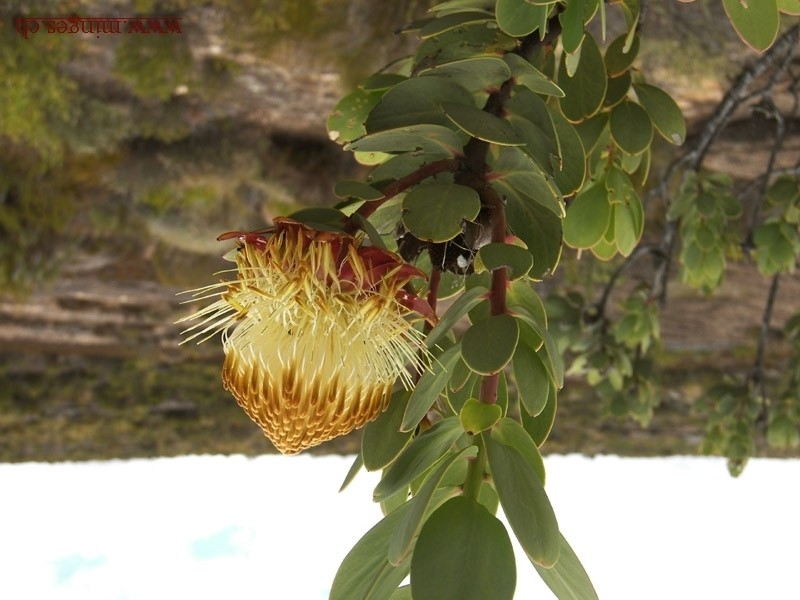Clanwilliam sugarbush
(Leucadendron spissifolium spissifolium)

Description
Protea glabra, also called the Clanwilliam sugarbush, is a flowering shrub belonging to the genus Protea. Other vernacular names for this plant are chestnut sugarbush, Clanwilliam protea or kayang bush. In Afrikaans it is known as the kaiingbos, kaiing-suikerbos, kaiinghout, kayangbos, kreupelwaboom or tolletjiewaboom. The tree's national number is 89.1. The bush grows up to 5m high and has a conical shape. It blooms from July to November. The plant is monoecious with both sexes in each flower. This species is endemic to South Africa. The plant is found in the Western Cape, on the Bokkeveld escarpment up to the Olifants River and the Koue Bokkeveld Mountains. Here, it is a widespread and common species with no severe threats. Pollination occurs through the action of birds and beetles. The seed is not stored in the woody fruit and is spread by the wind as soon as it is ripe. The plant grows in shallow sandstone soils or cracks in rock at altitudes of 500 - 1,500m. It is long-lived and can re-sprout after burning from a bole-shaped rootstock, although it normally grows in areas where there is low risk of wildfires. Protea is a genus of South African flowering plants, also called sugarbushes (Afrikaans: suikerbos). Most proteas occur south of the Limpopo River. However, Protea caffra kilimandscharica is found in the chaparral zone of Mount Kenya National Park. About 92% of the species occurs only in the Cape Floristic Region, a narrow belt of mountainous coastal land from Clanwilliam to Grahamstown, South Africa. The extraordinary richness and diversity of species characteristic of the Cape flora are thought to be caused in part by the diverse landscape, where populations can become isolated from each other and in time develop into separate species. The family Proteaceae to which Protea species belong is an ancient one among angiosperms. Evidence from pollen fossils suggests Proteaceae ancestors grew in Gondwana, in the Upper Cretaceous, 75–80 million years ago. The Proteaceae are divided into two subfamilies: the Proteoideae, best represented in southern Africa, and the Grevilleoideae, concentrated in Australia and South America and the other smaller segments of Gondwana that are now part of eastern Asia. Africa shares only one genus with Madagascar, whereas South America and Australia share many common genera – this indicates they separated from Africa before they separated from each other.
Taxonomic tree:







